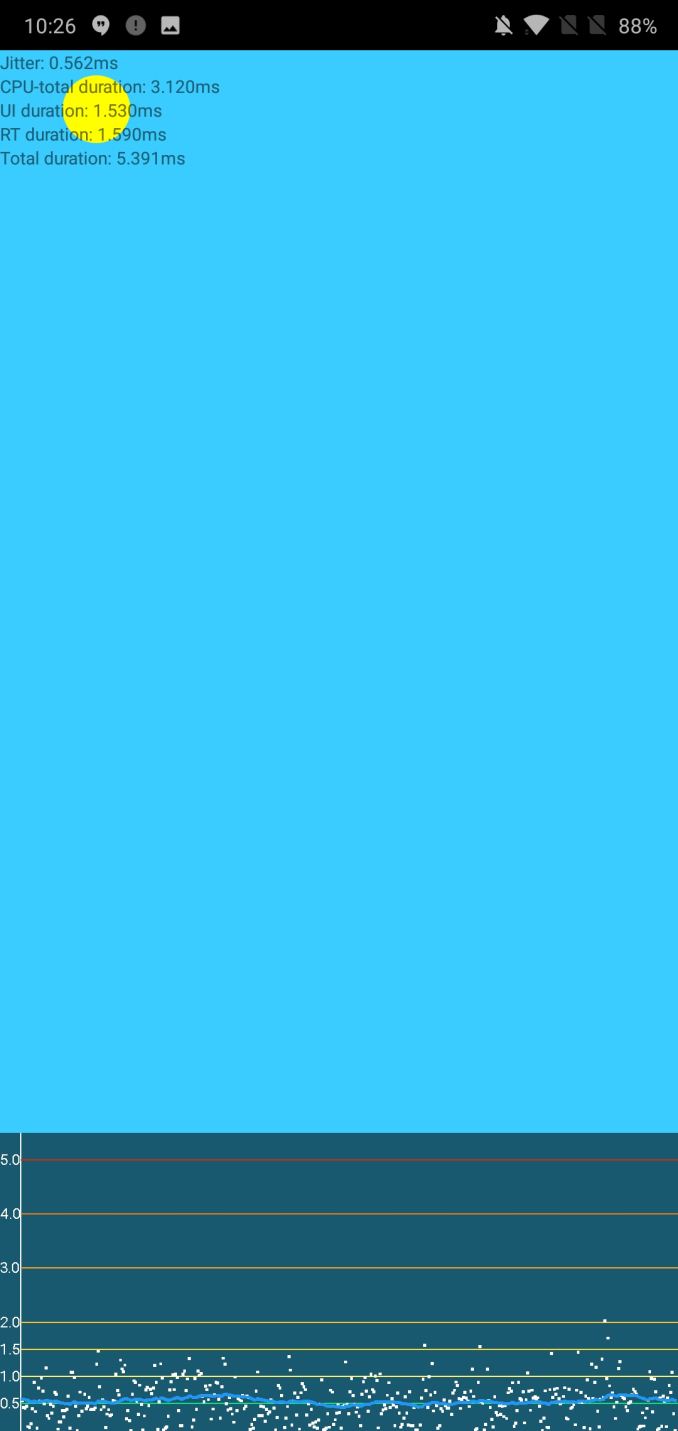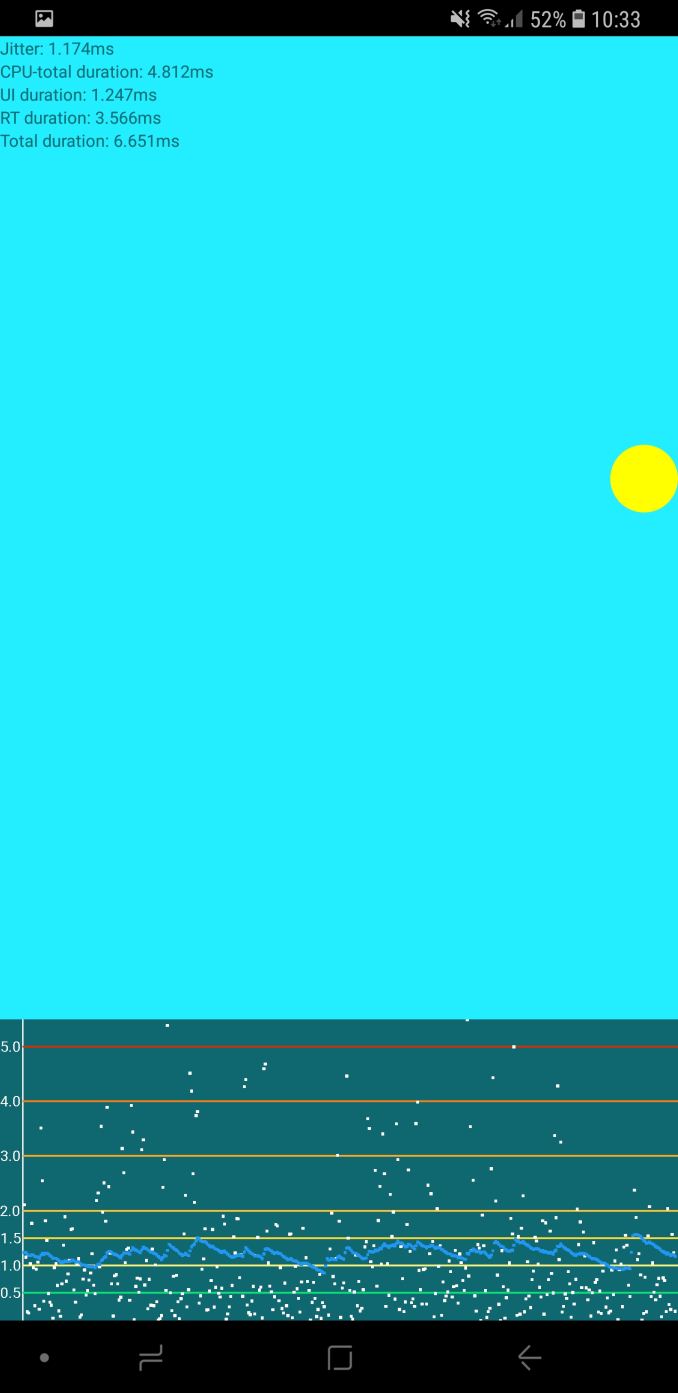The OnePlus 6 Review: Among The Best Of 2018
by Andrei Frumusanu on July 27, 2018 8:30 AM EST- Posted in
- Mobile
- Smartphones
- OnePlus
- OnePlus 6
System Performance
Another Snapdragon 845 device, another system performance section to dwell into. By now following the Galaxy S9 review and Mi MIX 2S review we should have some clear expectations of how the OnePlus 6 should perform. In my MIS 2S review in particular I was very vocal about how superbly the phone performed in terms of performance, and attributed this to a great software implementation on the side of SoC. The OnePlus 6 very much deserves the same praise as it not only has the same extraordinary snappiness, but actually ever so slightly manages to beat the MIX 2S in some cases.

Starting off with PCMark’s Web Browsing test, the OnePlus 6 is very much within the top scorers in terms of performance.

The video editing test again is mostly performing as expected.

In the Writing 2.0 test which uses Android APIs and does operations such as text editing and PDF rendering the OnePlus 6 actually manages to take the top spot in terms of performance. This test alone correlates extremely well with overall system performance of a phone and the OP6 taking first place is indeed very well representative of the phone’s feel.

Photo editing test, alongside the Mi MIX 2S also takes top spots among current devices.

The data manipulation score averages out among top Snapdragon 845 devices.

Finally the total score matches the Mi MIX 2S. There’s not much more to say here other than Qualcomm’s scheduler improvements in the S845 BSP have really paid off this generation and this directly results in excellent real-life performance.


The web tests showcase pretty much identical performance to the Mi MIX 2S which in turn both slightly outperform other S845 devices such as the Galaxy S9 and LG G7.
UI Fluidity
Over the past few months there’s been more outspoken discussions about Android speed tests versus actual device fluidity. In general the latter is extremely hard to quantize into a figure and there will always be corner cases or outliers that will probably perform better or worse when comparing between devices.
In the context of the OnePlus 6 as well as Snapdragon 845 devices I’ve looked more into what actually is different between them and what is seemingly causing the OP6 and MIX 2S to perform better than, say the Snapdragon Galaxy S9. Looking deeper into the kernel it looks like OnePlus and Xiaomi are both using a newer kernel build with more scheduler modifications than the kernels running on the S9 and G7. The details here go quite low level and is out of the scope of any public article, but the effects can be easily seen.


OnePlus 6 vs Galaxy S9+ (S845) Jitter Test
In the UIBench Jitter test we see the difference between the OnePlus 6 and the Galaxy S9 – the latter has a lore more inconsistent rendering frame-times. While in this test both have very clearly great frame-times well under 16.6ms – having more consistent frame times in turn can avoid random workload events that might push frame times over the deadline and result in dropped frames. The OnePlus 6 so far has been the best device in this particular test – only the Pixel phones come near to it but they don’t seem to have the same consistency over time.
Overall system performance of the OnePlus 6 deserves the same praise as the MIX 2S – both devices are currently the very best and fastest on the market and you will be absolutely not disappointed in their performances.










90 Comments
View All Comments
Lau_Tech - Saturday, July 28, 2018 - link
Thank you for the review Andrei! I think at this price point the oneplus 6's main problem is the lack of carrier support.In my country you can get an S9 for cheaper than a one plus 6 (with a carrier plan.)... Only people migrating to sim-only plans will still find the one plus 6 to be an attractive option.
Lau_Tech - Saturday, July 28, 2018 - link
Also would recommend some analysis of the fingerprint/face scanner ease of use Andrei... Something to consider for future reviews.diamondbackbilliards - Saturday, July 28, 2018 - link
More Like IphoneX but I hope beats the Iphone on multitasking level. as iphone can handle no lag even if you left 30 apps open. heavy or light.djayjp - Saturday, July 28, 2018 - link
Yes, buy a oneplus or a Huawei and have your data tracked (and likely hacked) by the Chinese government.PeachNCream - Saturday, July 28, 2018 - link
There's no evidence that phones made by Chinese companies are actually being used for spying at least not outside routine data collection inherent to all Google powered devices. The UA government has an advisory publication out discouraging their use as a precaution where government furnished cellular hardware is concerned, but I wouldn't universally apply that to private citizens that just want to hide their dirty pics from a spouse.djayjp - Monday, July 30, 2018 - link
Yeah you can give the Communist party all of your log in info and have them track you and steal IP. You have no idea how scary things are in China. There is ample evidence the Chinese government does hack. Look up about their new 1984 citizen points system.djayjp - Monday, July 30, 2018 - link
Maybe you'll disappear one day. But don't worry, your organs will be of great benefit to the party leaders.Greg E - Saturday, July 28, 2018 - link
Very useful review, if a little late for my purchase decision :>) A few comments from a user of about a month: 1) I waffled about the notch, finally "turned it off". This makes the notch background always black, which means that the stupid Google decision to not allow colored icons in the notification tray (because that would conflict with the uncontrolled background color) can maybe go away. I sorely miss having some icons easily spotted by use of color. 2) You don't comment on the utility (or otherwise) of the fingerprint sensor on the back. On my previous phone (Note 4) I didn't bother with security, as it was too much hassle. With a reachable, tappable (ie not swipe) FPS, this is easy, so I use it. I no longer use the power button or double-tap on screen to wake the phone, as the FPS does that along with security. 3) I don't care for the glass back either, but I read somewhere that this contributes to better radio performance. My experience in that regard has been pretty good, but I am not in a position to test (hint, hint). Also, this may put them in good position to add 5G antennae in the next generation. Can you comment on this?Andrei Frumusanu - Saturday, July 28, 2018 - link
2) FPS' have been around for long enough now that I generally don't have much to talk about them. Personally as I have like 15 devices on my desk I don't have them on by default and beyond shortly testing them.3) Radio performance testing is insanely hard to do correctly and requires >$60k of equipment or very close cooperation with an RF lab - currently we don't have any of the prerequisites. Also I've seen in the past that posting subjective or amateurish testing can be completely wrong so I prefer not to write about it rather than write misleading things when I have no sense of certainty on the topic.
ZolaIII - Sunday, July 29, 2018 - link
What makes the most on RF (radio) performance is traditionally antenna straight (size) and amplifier. So you have old chunky big antenna M's from late 90's that can get the signal when digged 6 fits under. Glass isn't particularly better than let's say plastic in letting analogue signals true but metals block them. Its a final time to step up and use nano tube polymers for phone casing or at least first gen of so called liquid metals (that actually don't have anything common with metal except straight)...